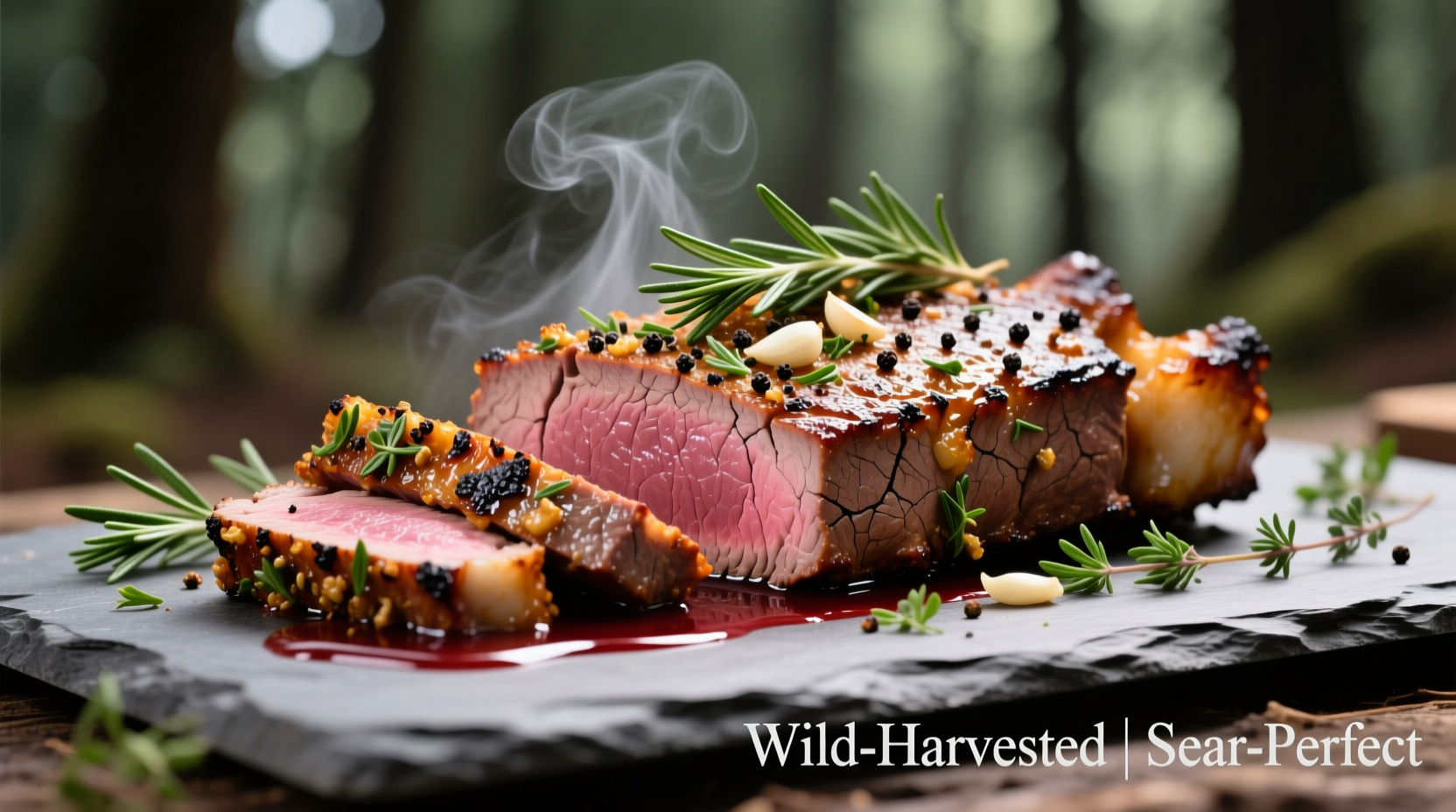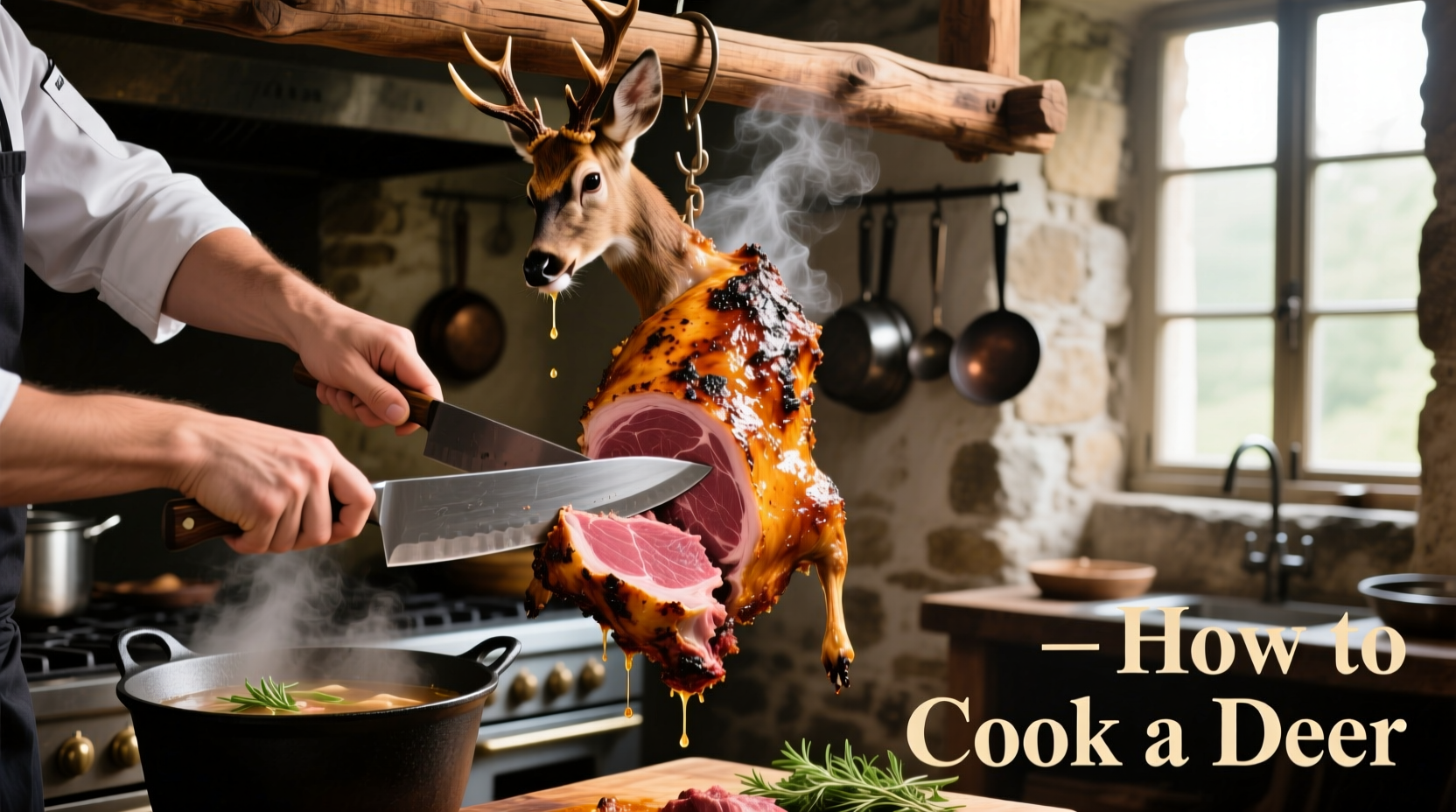Properly cooking deer meat requires specific techniques to maximize tenderness and minimize gamey flavors. This comprehensive guide provides field-to-table instructions, optimal cooking temperatures for each cut, and professional methods to transform venison into restaurant-quality meals.
Preparing deer meat correctly transforms what many consider "gamey" into some of the most flavorful, lean protein available. Unlike domesticated meats, venison requires special handling from the moment the animal is field-dressed through the cooking process. This guide covers everything you need to know for consistently delicious results, whether you're a first-time hunter or experienced outdoorsman.
Understanding Deer Meat Characteristics
Deer meat differs significantly from store-bought meats in several key ways that affect cooking outcomes. Venison contains less fat than beef or pork, making it prone to drying out if overcooked. The animal's diet and activity level directly impact flavor profile, with field-finished deer typically having cleaner taste than those feeding on agricultural crops.
| Meat Type | Protein (per 3oz) | Total Fat (per 3oz) | Saturated Fat | Calories |
|---|---|---|---|---|
| Deer (Venison) | 24g | 2g | 0.8g | 134 |
| Beef (95% lean) | 22g | 5g | 2g | 150 |
| Pork (loin) | 22g | 3g | 1g | 143 |
Nutritional comparison based on USDA FoodData Central data showing venison's leaner profile compared to other meats
Essential Preparation Steps Before Cooking
Proper preparation begins long before the meat hits your stove. Field dressing within 30 minutes of harvest prevents spoilage and preserves quality. Aging venison for 7-14 days at 34-38°F develops tenderness through enzymatic breakdown. Never skip the soaking step—submerge cuts in cold water with 1/4 cup salt per gallon for 12-24 hours to draw out blood and reduce gamey flavors.
For optimal results, follow this processing timeline:
- Field dressing within 30 minutes of harvest
- Quartering and initial cooling (2-4 hours)
- Soaking in saltwater solution (12-24 hours)
- Aging at controlled temperature (7-14 days)
- Trimming excess fat and connective tissue
- Vacuum sealing for storage or immediate cooking
Cooking Methods for Different Cuts
Understanding which cooking method works best for each cut prevents disappointment. Tender cuts like backstrap and tenderloin respond well to high-heat methods, while tougher cuts require slow cooking.
When to Use Each Cooking Method
- Grilling/Broiling: Best for backstrap, tenderloin, and loin chops (cook to 125-130°F for medium-rare)
- Pan-Searing: Ideal for steaks up to 1.5 inches thick (use cast iron for best sear)
- Braising: Essential for shoulder, shank, and other tough cuts (low and slow at 275°F for 3-4 hours)
- Stewing: Perfect for neck meat and less tender portions (simmer gently for 2+ hours)
Flavor Pairing Recommendations
Deer meat pairs exceptionally well with bold flavors that complement its rich profile. Create marinades using these proven combinations:
- Classic Game Marinade: Red wine, olive oil, garlic, rosemary, juniper berries, and black pepper
- Asian-Inspired: Soy sauce, ginger, sesame oil, rice vinegar, and brown sugar
- Mediterranean: Lemon juice, oregano, thyme, and extra virgin olive oil
Marinate tender cuts for 4-8 hours and tougher cuts for 12-24 hours. Always bring meat to room temperature before cooking for even results.

Avoiding Common Mistakes
Many hunters ruin perfectly good venison through preventable errors. The most frequent issues include:
- Overcooking: Venison dries out quickly—use a meat thermometer and remove at 125°F for medium-rare
- Ignoring connective tissue: Properly trim silver skin and connective tissue before cooking
- Skipping resting time: Let meat rest 5-10 minutes after cooking to redistribute juices
- Using insufficient seasoning: Venison requires more seasoning than domestic meats to enhance natural flavors
Storage and Leftover Techniques
Proper storage maintains quality for future meals. Vacuum-sealed venison lasts 12-18 months in the freezer when stored at 0°F or below. Thaw in the refrigerator over 24-48 hours for best results. Leftover venison makes excellent tacos, sandwiches, or salads when sliced thinly against the grain.
For immediate use, store fresh venison in the coldest part of your refrigerator for no more than 3-5 days. Always place meat on a tray to catch drips and prevent cross-contamination.
Frequently Asked Questions
How can I reduce gamey flavors in deer meat?
Soak meat in buttermilk or saltwater solution for 12-24 hours before cooking. Proper field dressing and quick cooling also minimize gamey flavors. Trimming all fat and connective tissue is crucial since these carry stronger flavors.
What's the ideal cooking temperature for deer backstrap?
Cook deer backstrap to 125-130°F for medium-rare, which equals 3-4 minutes per side when searing in a hot pan. Never cook venison beyond medium as it becomes tough and dry due to its low fat content.
Can I substitute deer meat for beef in recipes?
Yes, but with important adjustments. Reduce cooking time by 25-30% since venison cooks faster. Add extra moisture through marinades or basting, and increase seasoning as venison requires more flavor enhancement than beef.
How long should I age deer meat before cooking?
Aging deer meat for 7-14 days at 34-38°F significantly improves tenderness through enzymatic breakdown. Do not age beyond 14 days as quality begins to decline. Always maintain proper temperature and humidity during aging to prevent spoilage.











 浙公网安备
33010002000092号
浙公网安备
33010002000092号 浙B2-20120091-4
浙B2-20120091-4